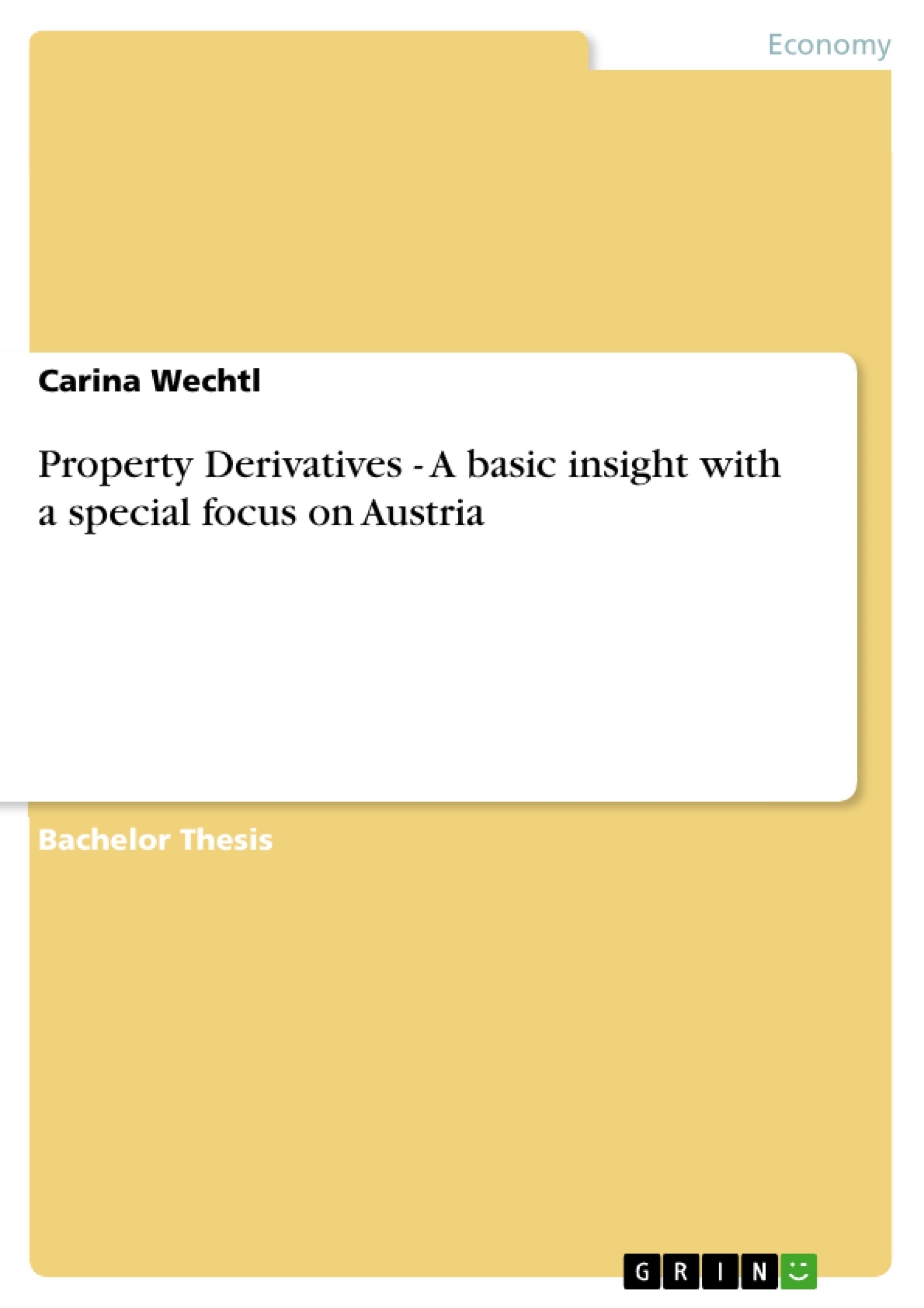Research Question:
The main research question of this paper is: "How do property derivatives work and which advantages do they have?" This question is answered in the chapters two to five where the necessary parts to establish property derivatives and their advantages in comparison with other real estate investments are mentioned.
The secondary questions are: "Is there a property derivatives market in Austria or even a potential?", and "For whom can a property derivative make sense and where is the state-of the-art in property derivative knowledge in Austria?" The first question is answered in chapter six and seven. The method to find out the state-of
the-art of knowledge is identified in chapter seven.
Inhaltsverzeichnis (Table of Contents)
- Problem outline and significance
- Purpose and Motivation
- Research Question
- Method
- Disposition
- Terminology
- Rationales for Property Derivatives
- Principles of the Property Derivative Market
- Advantages
- Disadvantages
- Users in the Market
- Basic Property Derivative Instruments
- Property Swaps
- Property Forwards
- Property Futures
- Property Options
- Underlying Indices
- Characteristics of Indices
- Indices in Austria
- Important International Indices
- Pricing of Property Derivatives
- Pricing Models for Property Derivatives
- Pricing influencing assumptions
- Property Derivatives in Austria
- Austrian Property Market
- Austrian Property Derivatives Market
- Valuation of a Property Swap
Zielsetzung und Themenschwerpunkte (Objectives and Key Themes)
This seminar paper aims to provide a basic understanding of property derivatives, with a specific focus on the Austrian market. It explores the rationales behind these instruments, examines various derivative types, and analyzes pricing models and market influences.
- Fundamentals of Property Derivatives
- The Austrian Property Market and its Derivative Instruments
- Pricing Models and Market Influences
- Advantages and Disadvantages of Property Derivatives
- Key Players in the Property Derivatives Market
Zusammenfassung der Kapitel (Chapter Summaries)
The paper begins by outlining the research question and methodology. Chapters 2 and 3 delve into the theoretical framework of property derivatives, explaining their rationale, advantages, disadvantages, and various types of instruments (swaps, forwards, futures, and options). Chapter 4 discusses underlying indices, focusing on their characteristics, examples in Austria, and significant international indices. Chapter 5 explores the pricing of property derivatives, examining both the models and the factors influencing price determination. Finally, Chapter 6 provides an overview of the Austrian property and property derivatives markets, laying the groundwork for further analysis (the conclusion and final chapter are excluded here to avoid spoilers).
Schlüsselwörter (Keywords)
Property derivatives, Austrian property market, pricing models, indices, risk management, financial instruments, investment strategies.
- Quote paper
- Mag.(FH) Carina Wechtl (Author), 2011, Property Derivatives - A basic insight with a special focus on Austria, Munich, GRIN Verlag, https://www.grin.com/document/186778



